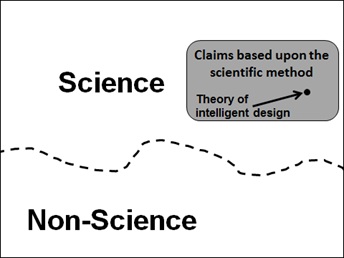 Intelligent Design
Intelligent Design
Why Intelligent Design Is Science: A Reading List
Update: See also a longer companion essay on this topic, More on How We Can Know Intelligent Design Is Science.
Just before Thanksgiving a friend e-mailed me because his daughter was about to give a presentation on whether intelligent design is science. She was looking for resources on the topic to read over the holiday. Thanksgiving is now behind us, but this reading list should still be useful to readers interested in the question of ID as science. Here’s an updated and expanded version of my reply:
First, I can outline how we know ID is science. We know ID is science because it uses the scientific method to make its claims.
The scientific method is commonly described as a four-step process involving observations, hypothesis, experiments, and conclusion. ID begins with the observation that intelligent agents produce complex and specified information (CSI). Design theorists hypothesize that if a natural object was designed, it will contain high levels of CSI. Scientists then perform experimental tests upon natural objects to determine if they contain complex and specified information. One easily testable form of CSI is irreducible complexity, which can be tested and discovered by experimentally reverse-engineering biological structures through genetic knockout experiments. The purpose is to determine if they require all of their parts to function. When experimental researchers uncover irreducible complexity in biology, they conclude that such structures were designed. For some nice, easy articles that further discuss why ID is science, please see any of the following links:
- “FAQ: Does intelligent design theory implement the scientific method?“
- “A Positive, Testable Case for Intelligent Design“
- “The Positive Case for Design“
- “Intelligent design (ID) has scientific merit because it uses the scientific method to make its claims and infers design by testing its positive predictions“
- “How Do We Know Intelligent Design Is a Scientific “Theory”?“
- “Does Intelligent Design Help Science Generate New Knowledge?“
Now some who are more philosophically inclined might object that philosophers can’t define science, so we can’t know that ID is science. It is true that philosophers have long debated the precise definition of science. In fact, current trends in philosophy of science eschew the use of demarcation criteria to distinguish between science and non-science. Larry Laudan comments on the consensus of this field:
[T]here is no demarcation line between science and non-science, or between science and pseudo-science, which would win assent from a majority of philosophers.
(Larry Laudan, Beyond Positivism and Relativism: Theory, Method, and Evidence, p. 210 (Westview Press 1996).)
As an initial response, I would point out that if we can’t say ID is science, then we also can’t definitely say ID isn’t science. Still, I believe it is possible to show that ID qualifies as science. While the precise definition of science may be unclear, most would agree there are certain qualities that clearly place some ideas on the side of science. One of those qualities is the scientific method. If an idea uses the scientific method, most would agree that it is scientific.
Second, a main source cited by ID-critics on this question is the Kitzmiller v. Dover ruling. If you aren’t familiar with it, the Kitzmiller v. Dover case was the first — and to date the only — lawsuit to assess the constitutionality of teaching ID in public schools. Unfortunately the judge in that case found ID was not science, that it was religion, and he ruled ID is unconstitutional to teach in public schools. But he could only make that ruling by getting numerous things wrong, including defining ID incorrectly, and completely ignoring the evidence of pro-ID peer-reviewed scientific papers that were submitted to him during the trial. We wrote a law review article — a pretty strong one in my opinion — responding to the judge’s ruling in the case. Our article addresses, in some detail, why ID is science. You might wish to skip past some of the technical legal analysis, but I think that overall, the article is very readable by anyone, even if you’re not a legal scholar. Titled “Intelligent Design Will Survive Kitzmiller v. Dover,” it can be found free online. See especially Part VI, “Error #3: Dismissing the Scientific Case for Design.”
Third, Michael Behe also wrote a response to the Dover ruling titled “Whether Intelligent Design is Science?” It’s a good resource too, and is free online.
Fourth, I wrote a lay-level article on this issue a couple years ago on the merits of ID, which got posted on the website OpposingViews.com. The article is titled “ID is Constitutional and Has Educational and Legal Merit” (also free online). That article explains, in more basic terms, some the reasons that we know ID is science, and also responds to common objections.
Finally, regarding the issue of ID and peer-reviewed scientific papers, you should be aware that ID proponents have published many peer-reviewed scientific papers. Nonetheless, it’s not necessary to be published in peer-reviewed papers to be scientific. For details, please see the following two links:
- “Peer-Reviewed & Peer-Edited Scientific Publications Supporting the Theory of Intelligent Design (Annotated)“
- “Intelligent Design Is Peer-Reviewed, but Is Peer-Review a Requirement of Good Science?“
I hope this helps!
Two other great resources I neglected to mention are Stephen Meyer’s book Signature in the Cell–especially chapters 18 and 19 where he addresses whether ID is science, as well as Meyer’s chapter in the book Nature of Nature, “Sauce for the Goose: Intelligent Design, Scientific Methodology, and the Demarcation Problem.”
Image credit: Wikicommons.


